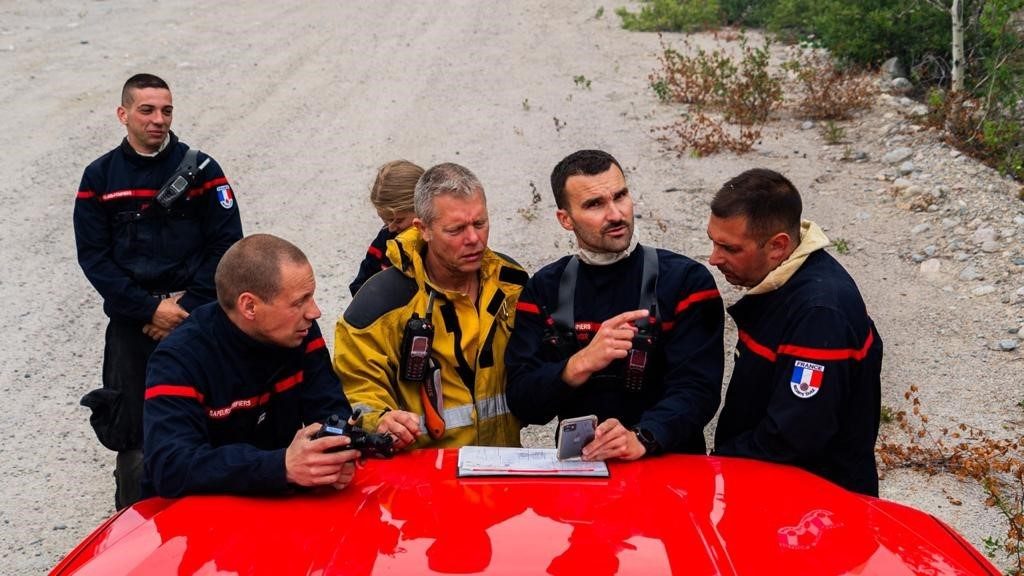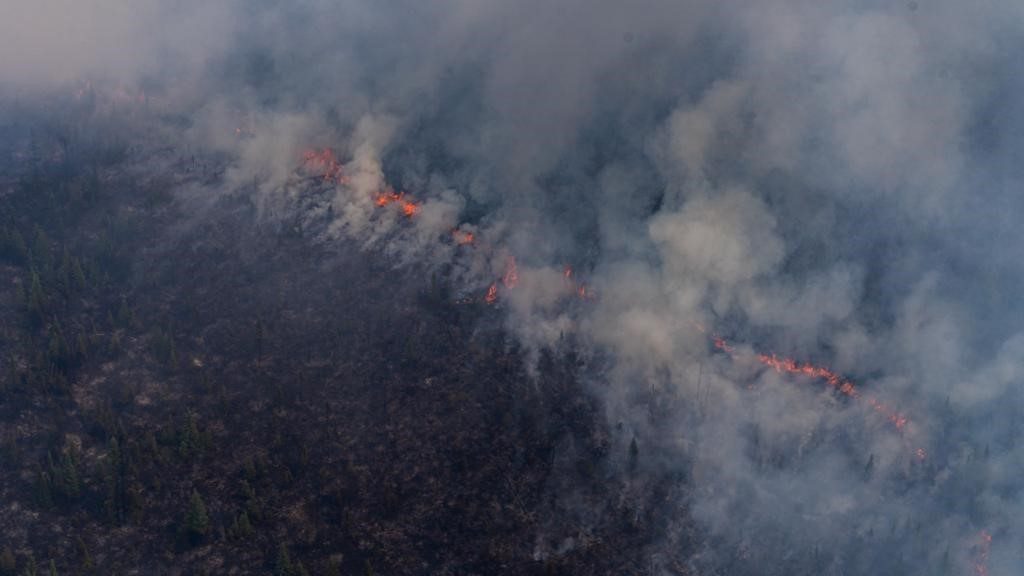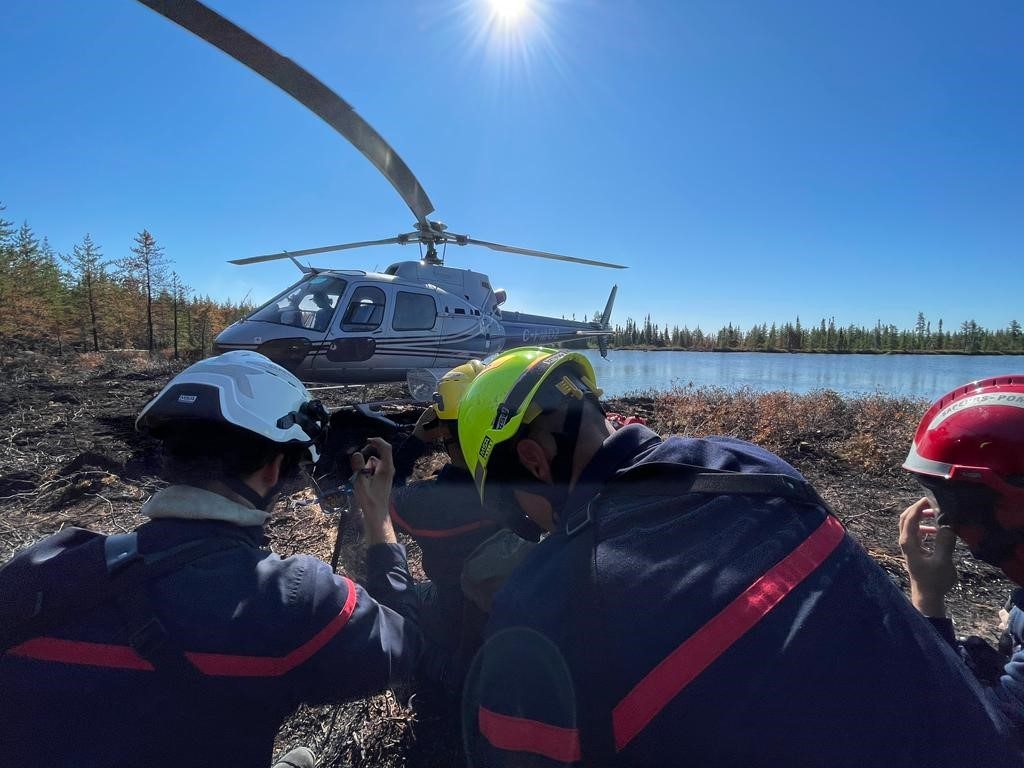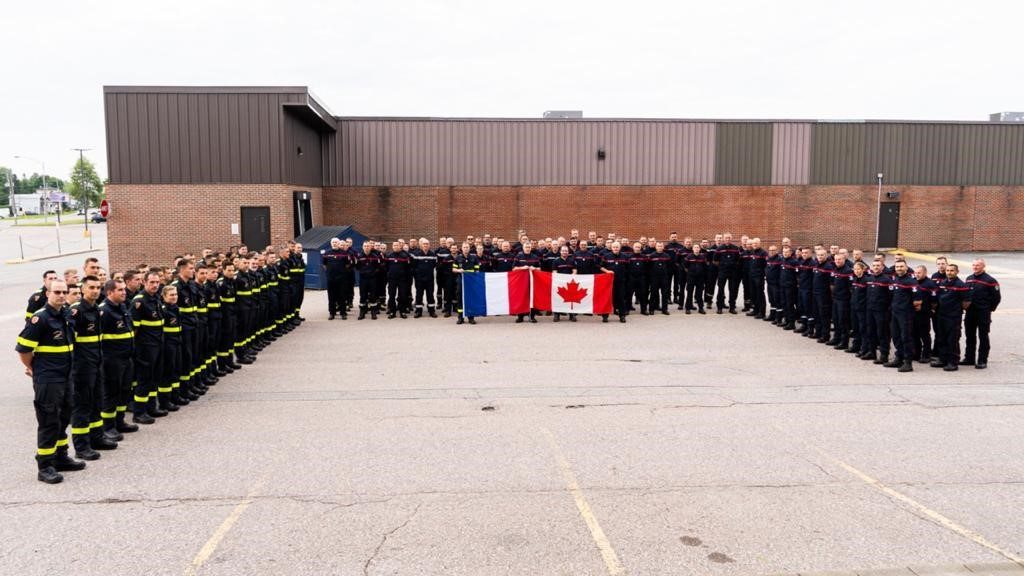From July 19 to August 9, a third French detachment intervened as reinforcements in Canada as part of international solidarity. The fires devastated the province of Quebec, whose vast forests are five times the size of France. Captain Maximilien Leboulanger was part of the force sent there. He tells us about his experiences with Canadian churches.
Where were you engaged?
We operated in a relatively isolated Northern Zone, lying beyond the 52nd parallel, 1500 kilometers north of Quebec. In this area, the department was tasked with two fires to ensure the protection of the population and the security of strategic equipment.
A first group was settled in Wemindji, an Indian reservation of the Cree community; a second group reached the small town of Radisson. Here is a hydroelectric power station that supplies electricity to the provinces of Quebec and New York.
After arriving by plane, we therefore had to drive to the area in a pick-up: 18 hours drive to do the same thing because the distances are particularly long…
For a day we were immersed in the organization: information on the forest fire situation, training in management tools and maps, presentation of the Canadian equipment available, combat techniques and strategies, then training in the use of helicopters, the main means of locomotion in particularly large work areas.
We received many tips on vigilance regarding the weather and the type of vegetation, without forgetting the risks to consider, such as the animals we were likely to encounter.
Our operation consisted of 126 firefighters. Working on the ground alongside our American and Canadian colleagues, we were able to benefit from a variety of skills (DIH, DIS, tactical fire, drones, FENICS module specialized in communications, FORMISC, SSSM and communications manager).
IN WHAT RELATIONSHIP DO YOU WORK?
THE On June 1st, Canada was confronted with a particularly violent storm episode: More than 3000 lightning strikes were registered. While the drought was already raging, 140 forest fires broke out within 24 hours. The fires spread over 5 million hectares.
The two fires in which we were involved affected 360,000 hectares of vegetation: an unusual situation given that Canadian firefighters never intervene in wildfires at this latitude. Given the scale of these fires, it was impossible to put them out. Our task was to contain the spread and the devastating effects of the flames on threatened infrastructure or houses.
How was your typical day?
The days were intense with a 5:30am wake-up call for a 6:45am rally. Every morning the work began with a detailed briefing by the forest protection company before the uninterrupted day began until 6 p.m.
In 80% of the cases, we were sent by helicopter several tens of kilometers into the interior of the fire, to edges that could not be reached by land. The change of the wind or the regular behavior of the fire could very quickly create situations where the teams could be in danger. To avoid this, nothing was left to chance. Meteorological data, aerial reconnaissance, fire observation, and safety procedures and instructions were clearly passed.
Each team worked independently at their location with equipment on board specifically for the day. The missions were varied: deforestation, deforestation, processing of forest edges, multiple eradication with up to 2 km long settlements.
We were provided with satellite phones and accompanied by technicians specialized in transmission and new technologies (FENICS) to ensure that the radio, satellite and telephone connections were maintained at all times.
WHAT IS THE DIFFERENCE TO THE PHENOMENA OF FOREST FIRES IN FRANCE?

Extreme problem solver. Professional web practitioner. Devoted pop culture enthusiast. Evil tv fan.








;Composite=(type=URL,url=https://images.radio-canada.ca/v1/assets/elements/16x9/outdated-content-2021.png),gravity=SouthEast,placement=Over,location=(0,0),scale=1)


